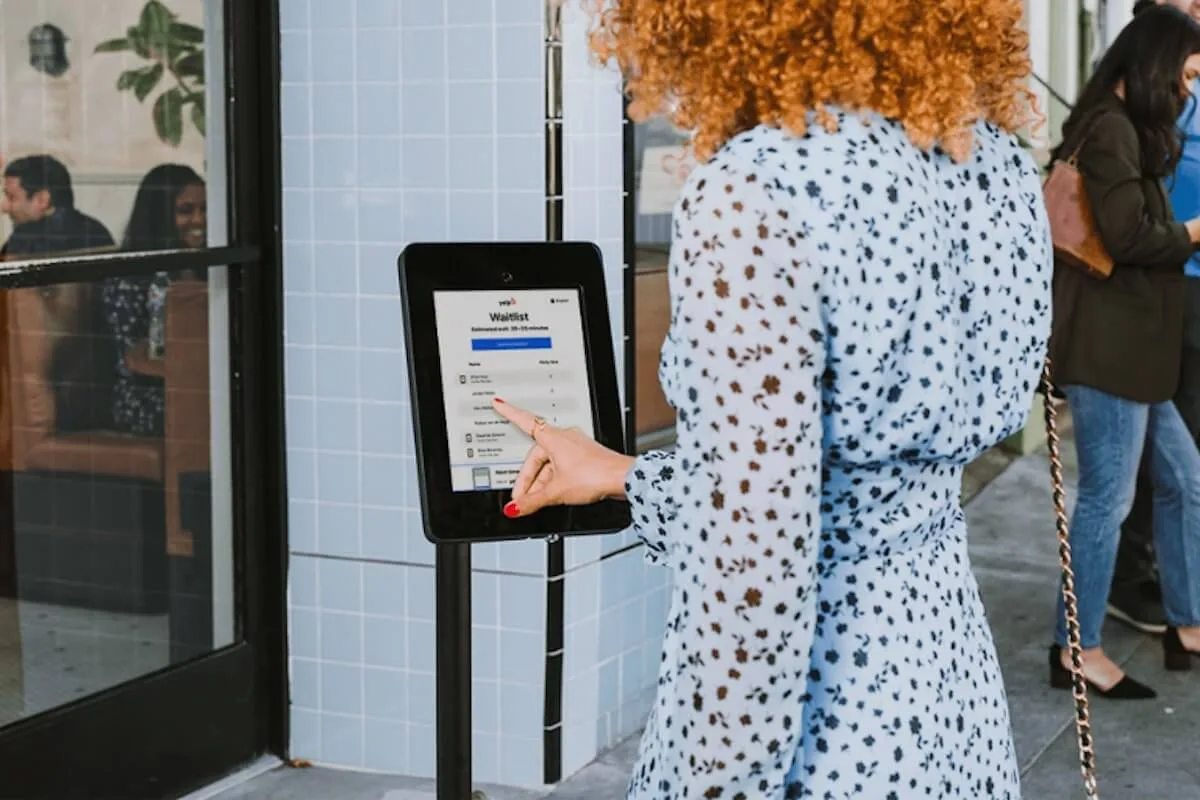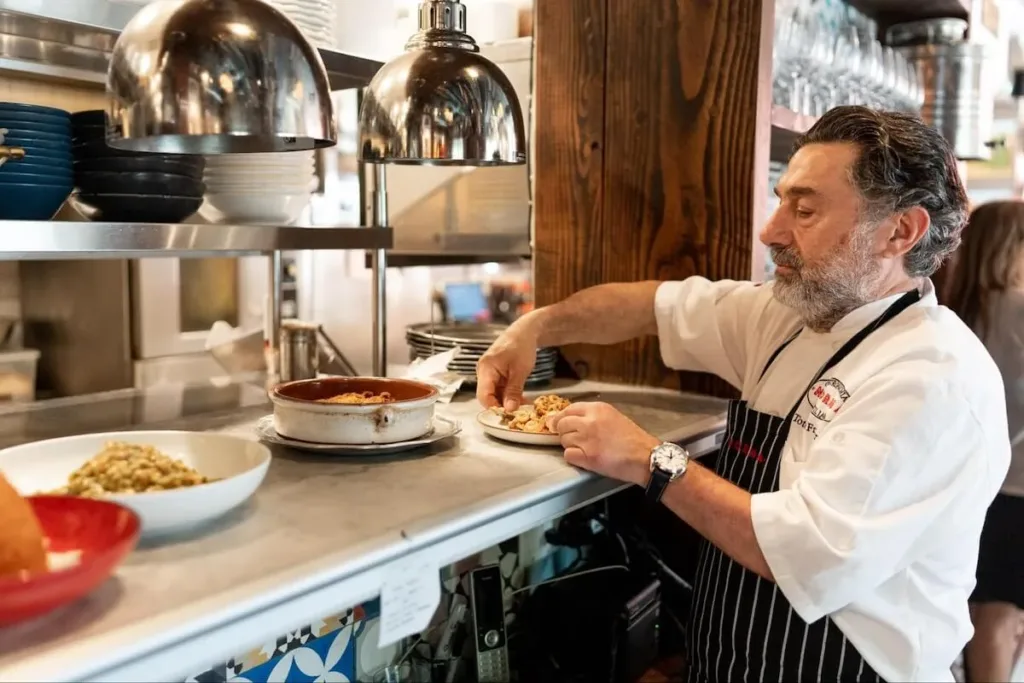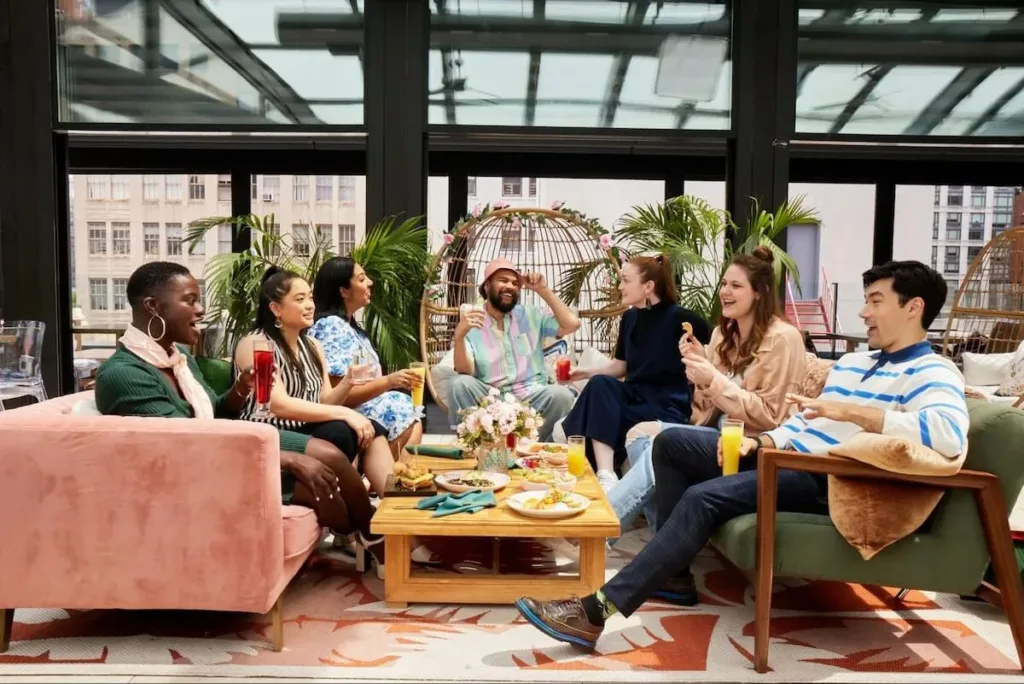Restaurant software: 12 platforms to consider
Even the simplest restaurant operations require a restaurant owner to manage all the moving parts to ensure a solid guest experience and profitability. Fortunately, restaurant software allows restaurateurs to streamline processes and make life easier through automation. And where the restaurant business goes, restaurants themselves must follow—or get left behind.
Following technology trends in general, restaurant management software has proliferated to the point where many companies are competing for attention in an increasingly crowded field. Restaurant software covers everything from point of sale systems to online ordering, inventory management, loyalty programs, and so on.
What exactly a restaurant needs is specific to that restaurant. So, let’s take a look at the types of restaurant software available and how it can benefit your operation.
12 helpful types of restaurant software

1. POS system
Everyone has a POS system. They’re essential to manage sales, handle table management, enter orders, take cash and credit card payments, track sales data, manage a customized floor plan, have employees clock in and out, and more.
Some POS systems we love include:
- Toast
- Omnivore
- Oracle Micros Symphony
- Dinerware
- Lightspeed Restaurant
- Squirrel Systems
- NCR Aloha
- POSitouch
- Square
Every worker in the hospitality industry has worked with at least one type of restaurant POS software, and will likely be able to give you their opinions on what they like and don’t like.
Get help choosing a front-of-house system here!
POS systems can vary depending on what kind of restaurant they’re serving. A quick service restaurant won’t have the same employee management needs that a full-service restaurant will.
Another feature you’ll likely want out of your POS system is the ability to record customer birthdays, preferences, and dietary restrictions. Automated systems that keep track of customer data can lead to human touches that make for a great dining experience, like remembering someone’s favorite cocktail or dessert, for example.
2. Front-of-house system
In many cases, it makes sense to combine a POS system with an all-in-one front-of-house software solution. A robust system like this is where restaurant software begins to shine and help impact a restaurant’s bottom line.
A robust FOH system like Yelp Guest Manager can seamlessly connect your POS system with waitlists and reservations from an integrated customer-facing mobile app. It can also provide online order options for takeout and food delivery as well as payment processing via that same mobile app. This can really help improve overall customer experience.
P.S.: If you’re just starting and looking to compare front-of-house solutions, check out a comparison of Yelp vs. Resy and Yelp vs. OpenTable.
Customers are aware that dining out prices are up—4.4% in June 2024 compared to June 2023, on top of a solid 8.8% in 2023 over 2022—so the perceived value of restaurants has to match. Crucially, restaurants can use their FOH system to communicate with customers in real-time chat via SMS for in-service messaging systems. This can help keep both customers and the restaurant informed with real-time restaurant seating availability, waitlist times, payment options, and more.
Flexible integration with third-party apps can be invaluable to restaurant operators as well. Yelp Guest Manager, for example, can link its FOH software suite with a number of POS systems as well as customer relations management (CRM) software and online food ordering platforms like Grubhub, which can help with marketing as well.
If anyone with an Android or iOS mobile device can get food from you at any time or learn more about your restaurant, from menu items to special features, it’s great for business. Make the ordering process easy, and they will come.
3. Tableside payment and ordering systems
Some POS systems require servers to write everything down and enter it at a POS terminal, while others rely on tools like an iPad for servers to input data and requests from customers.
Many restaurants have opted to streamline operations by opting for a mobile POS and ordering system, operated by staff on a tablet. This allows for orders to immediately be sent to a kitchen display system as well as for tableside, contactless payment via credit card.
This saves staff significant time so servers don’t need to run back and forth between stationary terminals. Automated ordering systems also prevent mistakes in the kitchen by eliminating antiquated communication methods (e.g., shouting or using pen and paper).
4. Kiosks and self-service seating

Another innovative FOH solution is a kiosk system of self check-in for customers.
A system like this offers several advantages:
- It helps reduce labor costs and staffing needs by reducing the need for a full-time host
- It keeps FOH staff from being overstretched by allowing customers to check themselves in
- A user-friendly system can be a great first impression for dine-in guests, especially in fast casual or fast food restaurants
McDonald’s is perhaps one of the most well-known examples of a food service giant that has embraced the kiosk model. It raised their sales 5-6% in the first year alone, and it’s now standard in all of their restaurants.
Yelp Kiosk is designed to help restaurants automate guest seating and check-in, and integrates seamlessly with Waitlist.
5. Online reservation software

Online reservations are fully mainstream now, as are waitlists. This makes the customer experience much easier than it used to be by providing estimated wait times, freeing up the hosts’ time, and unclogging phone lines.
Software like Yelp Guest Manager is excellent at estimating wait times, by the way: Yelp Guest Manager quotes wait times with up to 92% accuracy.
Online reservations through platforms like Guest Manager allow customers to make reservations with the push of a few buttons on their phone, which are then automatically confirmed and placed in the FOH system.
Restaurants that use Guest Manager can now create booking links to share on social media. It’s super simple: Restaurant owners and managers can create a unique URL for social media platforms that lead directly to your restaurant’s reservation page. You can share these on any platform and watch the rezzies roll in.
6. Customer relationship management (CRM) platform
A CRM platform helps a business understand their customers better. They can be cloud-based, software-as-a-service systems, offline systems, or systems that are a bit of everything, like Salesforce.
In reality, a good restaurant FOH system functions as a CRM. It provides a restaurant with customer data, financial information, sales management (like reservations), and analytics. Integrations with inventory management software and many other tools can help automate workflows, or at least streamline them wherever possible.
The best part about a good CRM is that it helps restaurant owners make smart choices based on actual data and not on guesswork. When data is all in one database, it’s easier to know what menu items are and aren’t working, what impact marketing campaigns are having, who your customers really are and what they like, and so on.
7. Loyalty program apps

There are a lot of ways to run a loyalty program, but an in-house app is an increasingly popular way to run one. Consider the wild success of large-scale loyalty apps like Starbucks and it’s easy to see why.
While a punch card or bonus gift cards are still certainly viable ways to run a loyalty program, it’s a lot easier these days to get regulars and new customers alike to sign up for (and remember) your app via a QR code you can place on tables. The app can track customer purchases and offer rewards points that can be spent on a number of things like discounts, free meals or drinks, or merchandise.
Rather than developing a custom app, there are plenty of companies that host a restaurant’s app for them. It may cost about $100 a month.
8. Employee management software
One of the main headaches in the hospitality industry is employee scheduling and management. Handle it wrong, and labor costs can go sky-high with overlapping schedules. Alternatively, you could find yourself short-staffed. The best solution is a shareable employee management system that keeps everyone on the same page at all times. They can also help you stay compliant with local labor laws.
There are countless employee management systems out there, but popular ones include:
- 7shifts
- Squirrel Systems
- Agendrix
- Planday—integrates with Lightspeed POS
- Fourth
9. Inventory management
One of the most crucial aspects of managing the back-of-house is managing inventory. In some cases, this may be up to the head or executive chef, but a restaurant owner or manager still has to keep a close eye on their inventory.
A well-managed inventory can help reduce food costs, optimize pricing, and help with forecasting future demand for items. Restaurant management systems with robust inventory management tools help you make sure you don’t over- or under-order.
Lightspeed has a robust inventory management program with lots of flexibility. We particularly like Lightspeed because their POS system already integrates with Yelp’s FOH solutions. MarketMan is another popular program that’s garnered a lot of attention. Posist is another excellent inventory management tool that ties in order alerts, notifications for expiration dates, and more.
10. Menu management

Each restaurant has a system to communicate front-of-house requests to the back-of-house. Some restaurants go old school and use pen and paper to pass orders along. Most rely on more sophisticated systems that allow for electronic communication automation.
A busy restaurant may go haywire if the front-of-house and back-of-house aren’t on the same page as to what’s available on a given day. Menu management systems can help chefs inform servers what items are sold out. Additionally, communicating special requests from customers can be made easier to remember through software solutions.
Often, a POS system doubles as a menu management tool and an ordering tool, but specific menu management tools like Kitchen CUT and Fourth hone in specifically on menu management. Additionally, Omnivore’s menu management system is a top contender for functionality and flexibility. Their software injects digital orders directly into a restaurant’s POS system, improving workflow and saving staff time.
11. Kitchen display systems
Kitchen display systems (KDS) are also becoming ubiquitous. A KDS teams up with FOH ordering systems and takes the order directly from the POS to the kitchen. This prevents mistakes and helps make special requests easier for kitchen staff to remember and understand, so “no onions” really leads to the customer not getting onions, preventing returns and improving customer satisfaction.
12. Accounting software
No restaurant can get by without at least some form of accounting. Realistically, time and attention paid to accounting usually ends up paying for itself many times over because a restaurateur may catch vital bits of information that’ve slipped through the cracks. Front-of-house software suites often help with accounting information by providing comprehensive analytics that can drive solid business decisions.
QuickBooks, Xero, and Sage are all solid systems that cover a restaurant’s accounting needs from top to bottom. Many of these tools will sync with software you may already have—Lightspeed integrates with all three of these, for example.
Software cost comparison: Yelp vs. OpenTable vs. Resy
So, with all this talk of software, you’re probably ready to explore some providers. Three of the most popular FOH software platforms are Yelp Guest Manager, OpenTable, and Resy. So what’s the best restaurant management software for your budget?
- Yelp Guest Manager offers a flat fee that doesn’t include cover charges to help businesses excel in their profits. Pricing ranges from $129-$299 per month for standard plans, with custom plans available as well.
- OpenTable charges $1 or $1.50 per cover booked on the OpenTable app or 25 cents booked via their widget on a restaurant’s website.
- Resy offers a flat fee plan, but starts at $249 a month and goes up to $899/month.
OpenTable starts lower at $39 per month but goes up to $449 per month, plus the cover charge. That cover charge can make OpenTable significantly more expensive than Yelp Guest Manager. For a restaurant with tight margins or one that is looking to boost its profit margins, that can make a significant difference.
Check out why one GM picked Yelp Guest Manager over OpenTable after heavily considering both (in large part thanks to our onboarding and customer support!).
Stack your restaurant software solutions how you like

Different restaurants will have different needs, so getting the functionality you need for your restaurant is key.
Whether you’re just opening a new restaurant or exploring options in restaurant software, Yelp Guest Manager is a full front-of-house solution that reaches 8x more consumers online than OpenTable.
With fully customizable floor plans, integrations with all the best POS systems and third-party apps, two-way customer communication, and online reservations and waitlists, Yelp Guest Manager ticks all the boxes.
Interested in a demo? We’d love to help you. Restaurant software has come a very long way in the last few years, and if you’re riding the wave of the future, you’ll be more likely than ever to turn customers into regulars.